Mad Hedge Biotech & Healthcare Letter
May 20, 2021
Fiat Lux
FEATURED TRADE:
(REGENERATED REGENERON)
(REGN), (PFE), (JNJ), (AMGN), (BMY), (GILD), (MRK), (LLY), (SNY), (BAYRY), (NVS), (RHHBY)
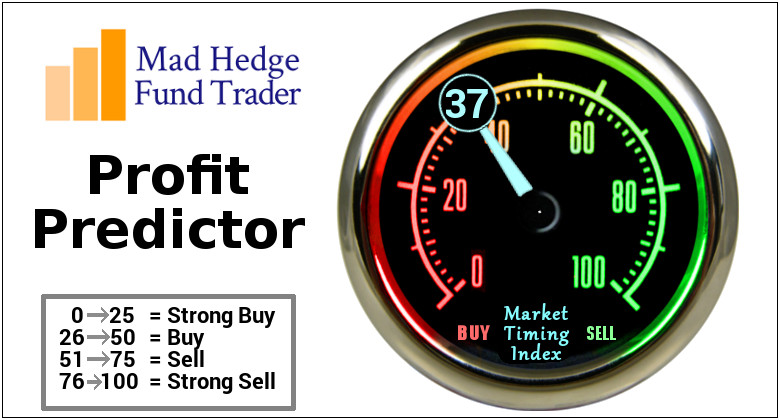
Mad Hedge Biotech & Healthcare Letter
May 20, 2021
Fiat Lux
FEATURED TRADE:
(REGENERATED REGENERON)
(REGN), (PFE), (JNJ), (AMGN), (BMY), (GILD), (MRK), (LLY), (SNY), (BAYRY), (NVS), (RHHBY)

The biotechnology and healthcare sectors have become attractive investment targets for investors who recognize the value and essence of these industries along with the possible risks associated with them.
While not all companies in these areas are great investments, some offer remarkable growth opportunities.
One company worth considering is Regeneron (REGN), with its strong and stable investment thesis and steady organic growth.
Regeneron joins the ranks of Pfizer (PFE) and Johnson & Johnson (JNJ) as one of the handful of biopharmaceutical companies to release solid first quarter results this 2021 compared to other big names in the industry, including Amgen (AMGN), Bristol Myers Squibb (BMY), Gilead Sciences (GILD), Merck (MRK), and Eli Lilly (LLY).
The New York-based company reported a 38% boost in its revenue compared to the same period in 2020, reaching $2.5 billion for the first quarter of 2021 alone.
Virtually all of Regeneron’s products generated solid growth during this period, with the company’s COVID-19 antibody cocktail REGEN-COV delivering the highest sales at $262 million.
To underscore just how significant REGEN-COV is to Regeneron this quarter, its absence from the roster would take away 18% from the company’s overall revenue growth.
Riding the momentum of its COVID-19 program, Regeneron has developed Inmazeb, which is a treatment for Ebola virus infection.
Aside from its COVID-19 antibody cocktail, Regeneron also saw an impressive boost in the performance of its atopic dermatitis drug Dupixent.
Dupixent, which Regeneron sells in partnership with Sanofi (SNY), generated $1.26 billion in sales in the first quarter, showing off a notable 48% increase from its 2020 report.
Although Dupixent is a shared product with Sanofi, this dermatitis drug holds incredible promise for Regeneron.
To date, only 6% of eligible patients are being treated with Dupixent. This indicates a massive space that is yet to be explored by both companies.
Taking into consideration the pace at which Dupixent has been growing so far, this drug is projected to peak at roughly $12.5 billion in sales in the coming years.
Another high-selling drug for Regeneron is wet age-related macular degeneration (AMD) treatment Eylea.
Sales for this drug, which was developed in collaboration with Bayer (BAYRY), went up from $1.2 billion in the first quarter of 2020 to $1.3 billion this year.
The increase in sales for Eylea is a welcome surprise for both Regeneron and Bayer, especially since more and more competitors are attempting to topple the drug as the top product in the niche.
Cornering the AMD segment is an attractive venture for any biopharmaceutical company.
After all, Eylea generated $4.9 billion in sales in 2020 from the US market alone.
Thus far, two main competitors have come forward as the strongest.
One is Novartis (NVS), which released Beovu in 2019.
The second, and possibly the stronger competitor between the two, is Roche (RHHBY) with Faricimab.
To ensure its dominance in the AMD market, Regeneron has been expanding the use of Eylea.
The latest development is the drug’s enrollment in the Phase 3 program, which would allow extended periods in between treatments but still deliver the same level of efficacy and safety.
Aside from these, Regeneron is looking into additional revenue streams ahead.
One growth segment is its oncology program, particularly its cancer drug Libtayo, which may soon be marketed to cover a fourth type of cancer.
Regeneron aims to submit Libtayo for review as a treatment for advanced cervical cancer.
On top of this, the drug is also a strong contender in the development of several antibody treatments.
Thus far, the company has 12 oncology antibodies under clinical development.
Overall, Regeneron’s strong results for the first quarter of 2021 highlighted its continuous evolution into a company carrying multiple and diverse portfolios of products and pipeline programs that address an extensive range of serious diseases, from COVID-19 and rare diseases to cancer.
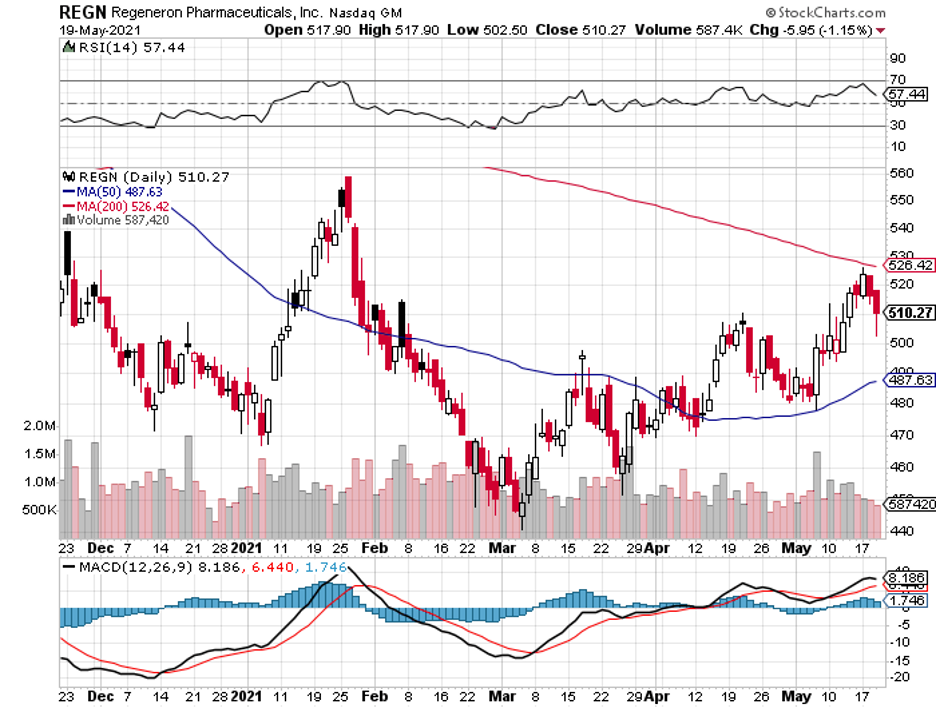
Mad Hedge Biotech & Healthcare Letter
April 27, 2021
Fiat Lux
FEATURED TRADE:
(THE FUTURE OF MEDICINE)
(CRSP), (VRTX), (EDIT), (NTLA), (PFE), (NVS), (GILD), (RHHBY),
(BMRN), (QURE), (SGMO), (CLLS), (ALLO), (BEAM)
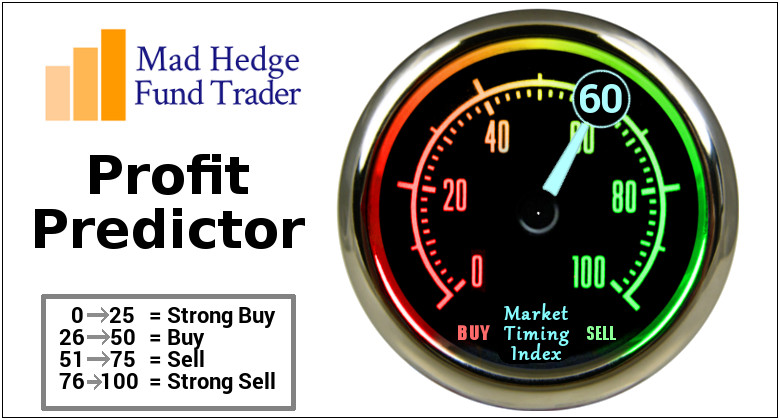
Winning the Nobel Prize in 2020 provided biotechnology companies more traction on Wall Street.
The victory led to commercializing the 2012 discovery, Crispr-Cas9, at breakneck speed, with gene editing companies like CRISPR Therapeutics (CRSP), Editas Medicine (EDIT), and Intellia Therapeutics (NTLA) gaining considerable boost in their values.
Since then, the total market value for the products of these three has more than doubled in recent months to reach $23 billion.
Basically, Crispr-Cas9 functions like molecular scissors.
What makes this technology incredible is that Crispr-Cas9 can classify a single address out of 3 billion letters within the genome by using only a particular sequence. With this, we can repair thousands of genetic conditions and even offer more potent ways to battle cancer.
The market favorite among the gene editing companies so far is CRISPR Therapeutics, with $8.72 billion in market capitalization.
In comparison, Editas has $2.76 billion while Intellia Therapeutics has $4.15 billion.
CRISPR Therapeutics is currently working on a treatment that would implant tumor-targeting immune cells in cancer patients. The company is also prioritizing therapies that could edit cells to treat diabetes.
So far, it has made significant progress in developing treatments for a genetic disorder called sickle cell.
In the US alone, at least 100,000 people suffer from sickle cell disease, with 4,000 more born every year. Conservatively, we can estimate at least 3,000 patients availing of this one-time treatment at over $1.6 million a pop.
To date, CRISPR Therapeutics has five candidates under clinical trials for diseases like B-thalassemia, sickle cell disease, and other regenerative conditions.
It has four more queued, which target diabetes, cystic fibrosis, and Duchenne muscular dystrophy.
Compared to its rivals in the space, it’s clear that CRISPR Therapeutics is ahead when it comes to product development and trials.
Two of its candidates, transfusion-dependent beta thalassemia treatment CTX001 and sickle cell disease therapy CTX110, have already been submitted for clinical tests for safety and efficacy.
Recently, Vertex (VRTX) boosted its 2015 agreement with CRISPR Therapeutics by 10%, with the deal reaching $900 million upfront to push for quicker results in developing CTX001.
This is a crucial move for Vertex, but more so for CRISPR Therapeutics as CTX001 holds a highly lucrative addressable market.
The additional funding significantly widened the gap between the Vertex-CRISPR team and bluebird bio (BLUE) in the race to launch a new gene editing therapy targeting sickle cell disease and beta thalassemia.
To sustain its growth, CRISPR Therapeutics’ strategy is to develop drugs that only require mid-level complexity but can rake in generous financial rewards.
This is a similar tactic used by bigger and more established biotechnology companies like Pfizer (PFE), Novartis (NVS), and Gilead Sciences (GILD).
Evidently, this strategy is a great way to ensure cash flow.
Aside from its earning from the commercialization of these products, CRISPR Therapeutics can also attract larger companies to buy the intellectual property of their breakthrough treatments.
After all, startups generally get 100% premiums in contracts with Big Pharma.
Good examples of this are Novartis that bought AveXis and Roche’s (RHHBY) purchase of Spark Therapeutics.
The Roche-Spark agreement led to the first-ever FDA-approved treatment since gene therapy trials started in the 1990s. It was for the genetic blindness therapy Luxturna, which received the green light in 2017.
The second approved treatment was a muscle-wasting disease therapy Zolgensma, which was the fruit of the Novartis-Avexis acquisition.
Both conditions are rare, but the financial rewards are impressive.
At $2 million for each treatment, Zolgensma sales reached $1.2 billion annually. At the rate the therapy is selling, Novartis estimates that Zolgensma will surpass the $2 billion mark in 2021.
Novartis and Roche aren’t the only ones partnering with smaller gene editing companies.
Pfizer has been working with biotechnology companies BioMarin Pharmaceutics (BMRN) and UniQure (QURE) to develop a treatment for blood-clotting disorder hemophilia.
The COVID-19 frontrunner is also collaborating with Sarepta Therapeutics (SRPT) to come up with a treatment for Duchenne muscular dystrophy.
Gene editing has also served as the foundation for several biotechnology companies out there today like Sangamo Therapeutics (SGMO), Cellectis (CLLS), and Allogene Therapeutics (ALLO).
The market size for gene editing treatments is estimated to be worth $11.2 billion by 2025, with the number rising between $15.79 billion to $18.1 billion by 2027.
This puts the compounded annual growth rate of this sector to be at least roughly 17%.
While this is already groundbreaking with only a handful of companies knowing how to utilize the technology, the gene editing world has come up with a more advanced technique than Crispr-Cas9.
The technology is founded on the “base editing” or “prime editing” technique, which is the simplest type of gene editing that alters only one DNA letter.
So far, one company holds exclusive rights to this technology: Beam Therapeutics (BEAM).
When the technology became public, Beam stock has increased sixfold since its IPO in February 2020.
This latest development can resolve thousands of genetic diseases. However, it still requires further trials since “base editing” can also trigger damaging responses from the body.
Overall, I think CRISPR Therapeutics is the safest among these high-risk stocks.
The data from two of its candidates, CTX001 and CTX110, are incredibly promising. Plus, the added funding from Vertex boosts the confidence of investors that regulatory approval is well on its way.
The company is also capitalizing on the surging price of its stock and investing aggressively across different rare disease programs.
While the company has yet to be considered a major force in the biotechnology world, the potential multiple successes of its products could generate a company worth hundreds of billions.
This potential alone offers an investing opportunity with a substantial asymmetric advantage for its current share price.
However, bear in mind that the stock is still a risk and should be played as a long-term investment. Hence, you should buy on dips.
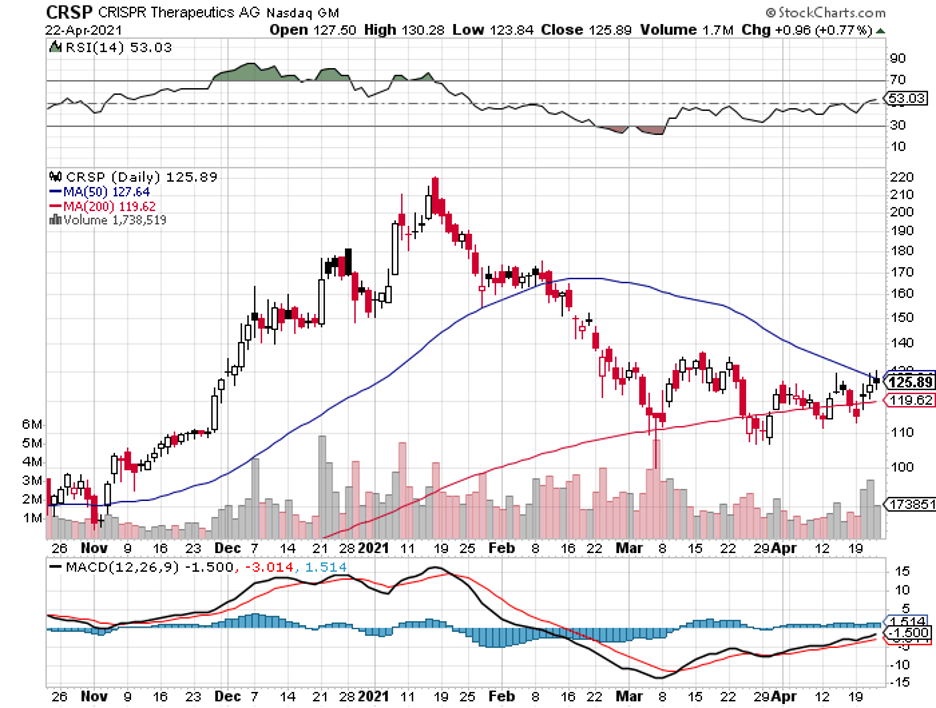
Mad Hedge Biotech & Healthcare Letter
April 13, 2021
Fiat Lux
FEATURED TRADE:
(MEGA CAP PHARMA UP FOR GRABS)
(MRK), (ABMD), (ILMN), (ALGN), (JNJ), (GILD), (PAND), (ALKS), (IMV)

Since the great 2007 financial crisis, many companies have been coping to recapture their former glory. The healthcare industry is not spared of this struggle.
This makes the continuous growth of Merck (MRK) all the more impressive, with the company reaching $195 billion in market capitalization and sustaining its rise for over 130 years.
Curiously, Merck’s share price is still in the mid-$70s.
Meanwhile, other large-cap biopharmaceutical companies that offer similar products and services are trading higher.
For instance, the share price for Abiomed (ABMD) is over $330 while Illumina (ILMN) is nearly $400, and Align Technology (ALGN) is at a whopping $600.
Like Merck, investors gravitate towards Abiomed, Illumina, and Align because of their capacity to generate long-term sustainable revenues and boost earnings.
Notably, though, none of them hold the same depth or even breadth of products and services that Merck offers.
Recently, Merck disclosed some of its initiatives to boost the company’s earnings in the near- and long term.
One of the most visible efforts is its collaboration with Johnson & Johnson (JNJ) to help with the manufacturing of JNJ-78436735, in which Merck received federal funding.
While JNJ is one of the biggest healthcare companies across the globe, with a market capitalization of roughly $425 billion, joining forces with Merck will substantially boost its vaccine manufacturing capacity.
For context, JNJ’s goal prior to Merck’s help is to deliver 100 million doses by the end of the second quarter of 2021.
With Merck’s assistance, JNJ can now realistically manufacture up to 3 billion doses in 2022 alone.
This means that JNJ can implement a massive vaccination drive in the next two years since its manufacturing capacity ensures that it can deliver shots to over one-third of the population.
This is obviously good news for everyone as it means that the virus will be contained, but the enhanced manufacturing capacity also means profit accretion for both JNJ and Merck.
This partnership with JNJ is possibly a key factor in Merck’s move to invest heavily in the vaccine business.
Merck recently announced its plans to allocate $20 billion to expand its global vaccine manufacturing network from 2021 to 2024. This would mean an annual investment of $5 billion.
Part of this global vaccine plan is Merck’s acquisition of Pandion Therapeutics (PAND) in 2020.
Another recent initiative of the company is its joint effort with Gilead Sciences (GILD) to develop long-lasting HIV treatments.
Gilead will be in charge of the US market, while Merck will handle the EU and the rest of the international markets.
For starters, the companies will focus on a combination of Merck’s Islatravir and Gilead’s Lenacapavir to create a long-lasting and well-tolerate HIV treatment.
Outside these partnerships, Merck has been working on strengthening its oncology segment.
In fact, its top-selling drug, Keytruda, can be used to medicate an extensive range of indications, which include colorectal, esophageal, and even lung cancers.
At this point, Keytruda is generating north of $16 billion in sales every year and exhibiting roughly 30% growth annually.
Since the drug continues to gain approvals for additional indications, it looks like its growth runway is definitely far from over.
Keytruda is poised to reach $24 billion in annual sales in a few years’ time, which puts it on track to become the best-selling drug in the world by 2023.
Although Keytruda will be under patent protection until 2028, Merck remains active in expanding its oncology pipeline.
By then, Merck is projected to have multiple immunotherapy staples in its portfolio not only derived from its own R&D but also via partnerships like its 2020 collaboration with Alkermes (ALKS) to work on an ovarian cancer study and Immunovaccine (IMV) to cooperate on a blood cancer study.
The total oncology market is estimated to be $200 billion annually, with over 30 million cases projected to be added by 2040.
Overall, Merck is a well-oiled company that continues to deliver good results thanks to strategic acquisitions and partnerships neatly tied up together in a particular domain.
While its rival biotechnology and pharmaceutical companies become hot properties in the market and pose higher price tags, Merck silently moves forward in the shadows of sustainability and familiarity.
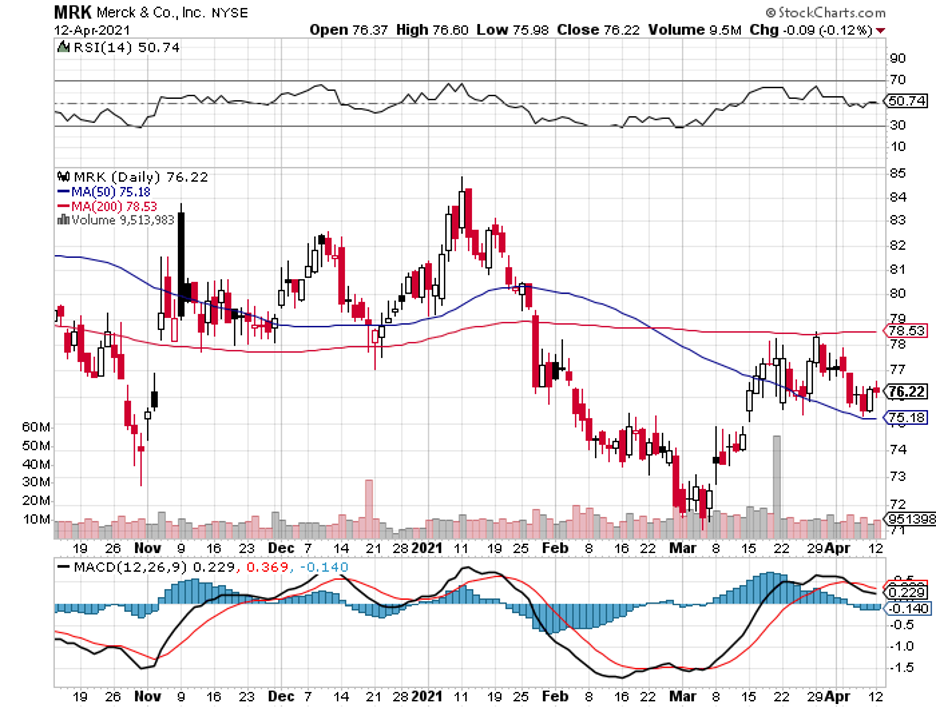
Mad Hedge Biotech & Healthcare Letter
April 8, 2021
Fiat Lux
FEATURED TRADE:
(A LOW-KEY POST-COVID-19 RECOVERY STOCK)
(REGN), (MRNA), (NVAX), (BNTX) (PFE), (VIR), (LLY), (RHHBY), (NVS)
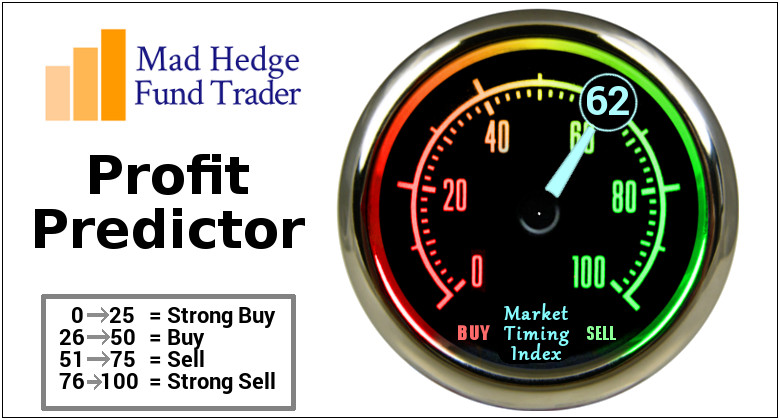
If you still remember the news about the flash recovery from COVID-19 of then-President Trump during the campaign period last year, then you know that the express cure was not delivered by any of the vaccine makers that were all the rage at the time like Moderna (MRNA), Novavax (NVAX), BioNTech (BNTX), or even Pfizer (PFE).
Instead, the cure was credited to a lesser-known cocktail of antibodies, called REGEN-COV, developed by Regeneron (REGN).
Recently, the same treatment was used in Germany in response to the shortage of COVID-19 vaccines and the demand for alternatives.
Despite the promising results and the highly publicized effects of Regeneron’s treatment, the company’s share price still hasn’t shown any meaningful upside.
Nonetheless, Regeneron still secured some agreements for REGEN-COV.
Based on the June 2020 agreement of Regeneron with the US government, the company expects to sell $260 million worth of REGEN-COV in the first quarter of 2021 for a fixed number of orders.
For the second quarter of 2021, though, the two parties set different terms for their deal.
Under these new terms, the US government will pay per dose regardless of REGEN-COV’s dose size.
Given the latest numbers from Regeneron’s trials, this could mean lower costs for the company.
Data from the clinical trials showed that REGEN-COV had the same effectiveness at the lower 1,200 mg dosage compared to the currently approved amount by the US FDA, which is 2,400 mg.
In fact, Regeneron’s treatment is reported to be as effective as the COVID-19 antibody therapies developed by Vir Biotechnology (VIR) and even Eli Lilly’s (LLY) candidate.
Looking at the positive results from Regeneron’s Phase 3 trials for REGEN-COV, it’s reasonable to expect higher sales than previously estimated.
Now, Regeneron shared that it aims to supply 1.25 million doses of the COVID-19 antibody therapy at the lower but equally effective 1,200 mg dose level.
If the FDA agrees to this emergency use authorization request, then Regeneron will be able to supply twice the number of COVID-19 doses.
If it delivers these doses by June 30, the US government will buy them for $2.6 billion regardless of the dosage used.
On average, Regeneron is expected to generate roughly $2.9 billion in sales for its COVID-19 antibody treatment.
Meanwhile, if REGEN-COV gains full FDA approval and gets marketed commercially, then the treatment can rake in at least $3.5 billion and peak at $5 billion this year alone.
Outside its COVID-19 program, Regeneron actually recorded better-than-expected results last year despite the pandemic ravishing the economy.
For example, there was a rebound in demand for its top-selling Eylea, with sales of the wet age-related macular degeneration (AMD) drug rising by 10% in the fourth quarter of 2020 to reach a total of $1.34 billion.
Bolstering the dominance of Eylea in the AMD market and to combat emerging competitors like Roche (RHHBY) with Faricimab and Novartis (NVS) with Beovu, Regeneron is looking to expand the drug’s application to cover more age groups.
Meanwhile, another bestseller, Dupixent, reached $1.17 billion in sales last year.
This is an impressive climb for the atopic dermatitis medication, which was developed with Sanofi (SNY), since it only recorded $751.5 million in the same period in 2019.
That indicates roughly 75% growth, with over a million prescriptions written for Dupixent in the US alone.
However, only 6% of those eligible patients have been treated with Regeneron’s product thus far.
This means that Dupixent has a lot of room to grow, with this drug estimated to reach peak sales at $12.5 billion.
Needless to say, Dupixent is quickly transforming into a blockbuster treatment.
Since its approval for eczema in 2017, this drug has expanded its indication to cover moderate-to-severe atopic dermatitis not only among teens but also children. Notably, Dupixent holds a monopoly for this application to children.
Another revenue stream for Regeneron is its oncology sector led by Libtayo.
In 2020, net sales of this skin cancer treatment reached $348 million, showing an impressive 80% growth.
To date, Regeneron has at least 12 oncology treatments under clinical development.
In terms of the bottom line, Regeneron exceeded the expectations of $8.38 and reported adjusted earnings per share of $9.53 instead.
As vaccine rollouts continue to be a priority, it’s safe to say that the worst of the COVID-19 is just about in sight.
Consequently, investors are now looking into recovery and stocks that appear to be good buys when the coronavirus eventually becomes a thing of the past.
Regeneron is one of the attractive buys so far. While it has been underperforming in the past weeks, its business actually looks to be in great shape even if the pandemic goes on for longer.
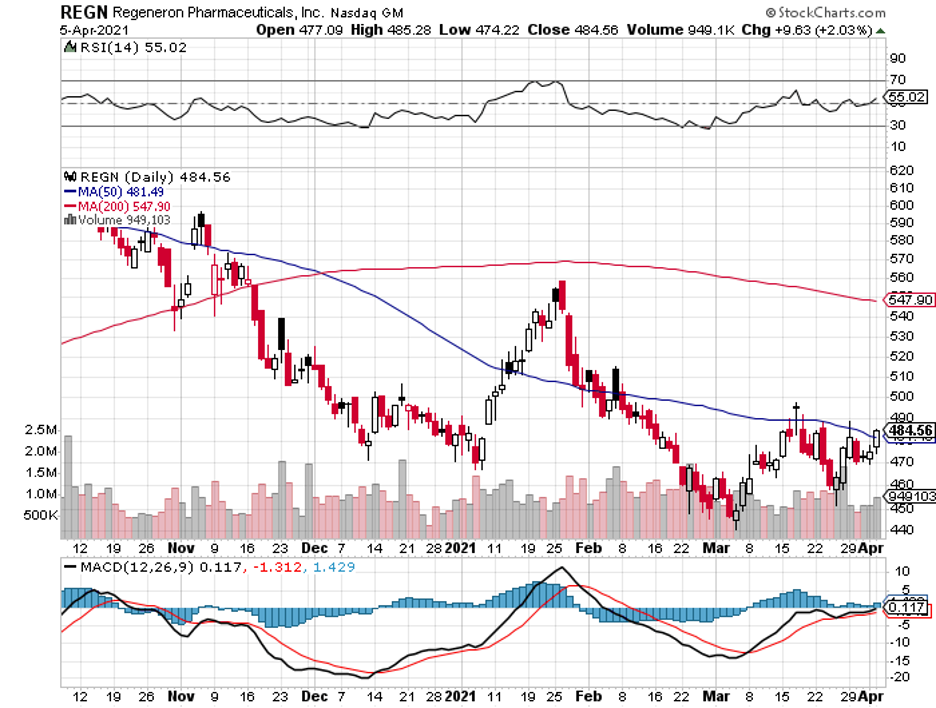
Mad Hedge Biotech & Healthcare Letter
March 9, 2021
Fiat Lux
FEATURED TRADE:
(AN MRNA STOCK TO CONSIDER)
(BNTX), (MRNA), (PFE), (NVS), (SNY), (AZN), (JNJ), (NVAX), (MRK), (BMY), (REGN), (DNA), (CVAC), (FB), (TSLA), (GOOG)
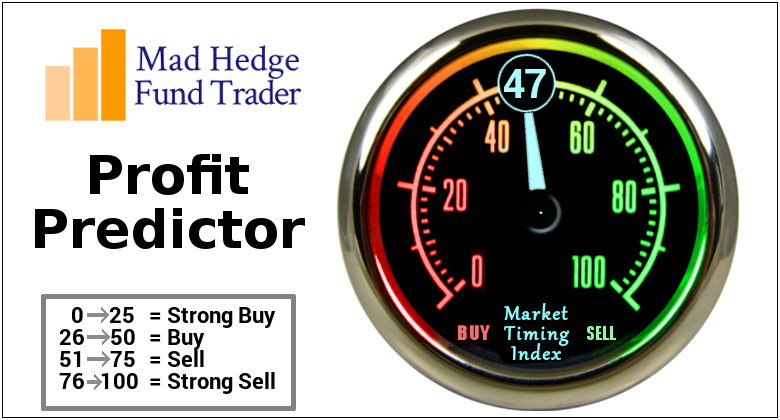
Mad Hedge Biotech & Healthcare Letter
February 25, 2021
Fiat Lux
FEATURED TRADE:
(AN UNDER THE RADAR BIOPHARMA PLAY)
(ALNY), (PFE), (BNTX), (MRNA), (NVS), (GME), (BX)
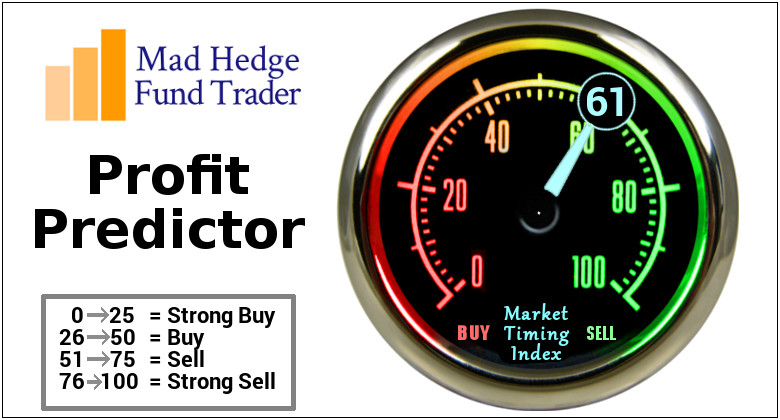
Legal Disclaimer
There is a very high degree of risk involved in trading. Past results are not indicative of future returns. MadHedgeFundTrader.com and all individuals affiliated with this site assume no responsibilities for your trading and investment results. The indicators, strategies, columns, articles and all other features are for educational purposes only and should not be construed as investment advice. Information for futures trading observations are obtained from sources believed to be reliable, but we do not warrant its completeness or accuracy, or warrant any results from the use of the information. Your use of the trading observations is entirely at your own risk and it is your sole responsibility to evaluate the accuracy, completeness and usefulness of the information. You must assess the risk of any trade with your broker and make your own independent decisions regarding any securities mentioned herein. Affiliates of MadHedgeFundTrader.com may have a position or effect transactions in the securities described herein (or options thereon) and/or otherwise employ trading strategies that may be consistent or inconsistent with the provided strategies.
This site uses cookies. By continuing to browse the site, you are agreeing to our use of cookies.
OKLearn moreWe may request cookies to be set on your device. We use cookies to let us know when you visit our websites, how you interact with us, to enrich your user experience, and to customize your relationship with our website.
Click on the different category headings to find out more. You can also change some of your preferences. Note that blocking some types of cookies may impact your experience on our websites and the services we are able to offer.
These cookies are strictly necessary to provide you with services available through our website and to use some of its features.
Because these cookies are strictly necessary to deliver the website, refuseing them will have impact how our site functions. You always can block or delete cookies by changing your browser settings and force blocking all cookies on this website. But this will always prompt you to accept/refuse cookies when revisiting our site.
We fully respect if you want to refuse cookies but to avoid asking you again and again kindly allow us to store a cookie for that. You are free to opt out any time or opt in for other cookies to get a better experience. If you refuse cookies we will remove all set cookies in our domain.
We provide you with a list of stored cookies on your computer in our domain so you can check what we stored. Due to security reasons we are not able to show or modify cookies from other domains. You can check these in your browser security settings.
These cookies collect information that is used either in aggregate form to help us understand how our website is being used or how effective our marketing campaigns are, or to help us customize our website and application for you in order to enhance your experience.
If you do not want that we track your visist to our site you can disable tracking in your browser here:
We also use different external services like Google Webfonts, Google Maps, and external Video providers. Since these providers may collect personal data like your IP address we allow you to block them here. Please be aware that this might heavily reduce the functionality and appearance of our site. Changes will take effect once you reload the page.
Google Webfont Settings:
Google Map Settings:
Vimeo and Youtube video embeds:
